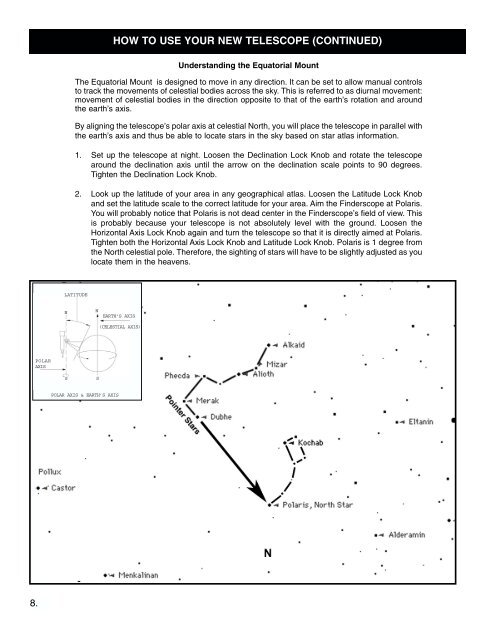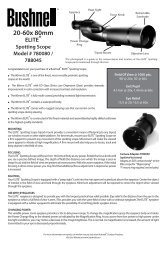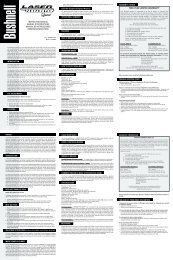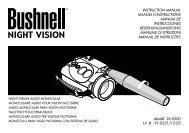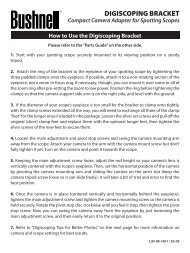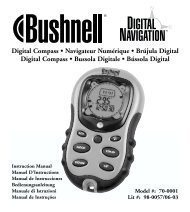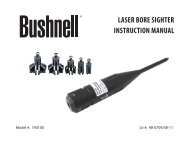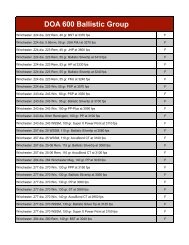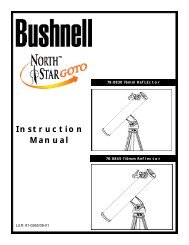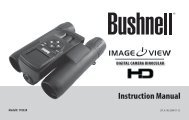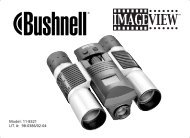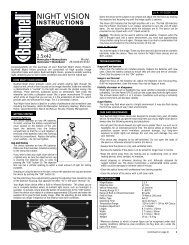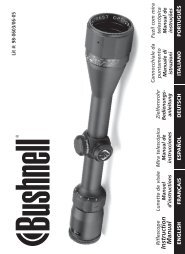Telescope Instruction Manual - Bushnell
Telescope Instruction Manual - Bushnell
Telescope Instruction Manual - Bushnell
Create successful ePaper yourself
Turn your PDF publications into a flip-book with our unique Google optimized e-Paper software.
POLAR<br />
AXIS<br />
8.<br />
HOW TO USE YOUR NEW TELESCOPE (CONTINUED)<br />
Understanding the Equatorial Mount<br />
The Equatorial Mount is designed to move in any direction. It can be set to allow manual controls<br />
to track the movements of celestial bodies across the sky. This is referred to as diurnal movement:<br />
movement of celestial bodies in the direction opposite to that of the earth’s rotation and around<br />
the earth’s axis.<br />
By aligning the telescope’s polar axis at celestial North, you will place the telescope in parallel with<br />
the earth’s axis and thus be able to locate stars in the sky based on star atlas information.<br />
1. Set up the telescope at night. Loosen the Declination Lock Knob and rotate the telescope<br />
around the declination axis until the arrow on the declination scale points to 90 degrees.<br />
Tighten the Declination Lock Knob.<br />
2. Look up the latitude of your area in any geographical atlas. Loosen the Latitude Lock Knob<br />
and set the latitude scale to the correct latitude for your area. Aim the Finderscope at Polaris.<br />
You will probably notice that Polaris is not dead center in the Finderscope’s field of view. This<br />
is probably because your telescope is not absolutely level with the ground. Loosen the<br />
Horizontal Axis Lock Knob again and turn the telescope so that it is directly aimed at Polaris.<br />
Tighten both the Horizontal Axis Lock Knob and Latitude Lock Knob. Polaris is 1 degree from<br />
the North celestial pole. Therefore, the sighting of stars will have to be slightly adjusted as you<br />
locate them in the heavens.<br />
LATITUDE<br />
N<br />
N<br />
S S<br />
EARTH’S AXIS<br />
(CELESTIAL AXIS)<br />
POLAR AXIS & EARTH’S AXIS


